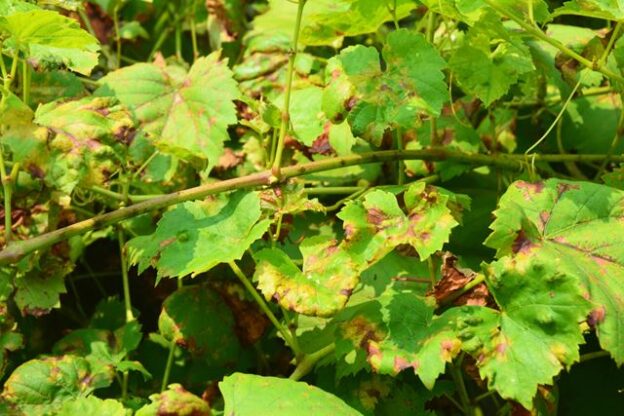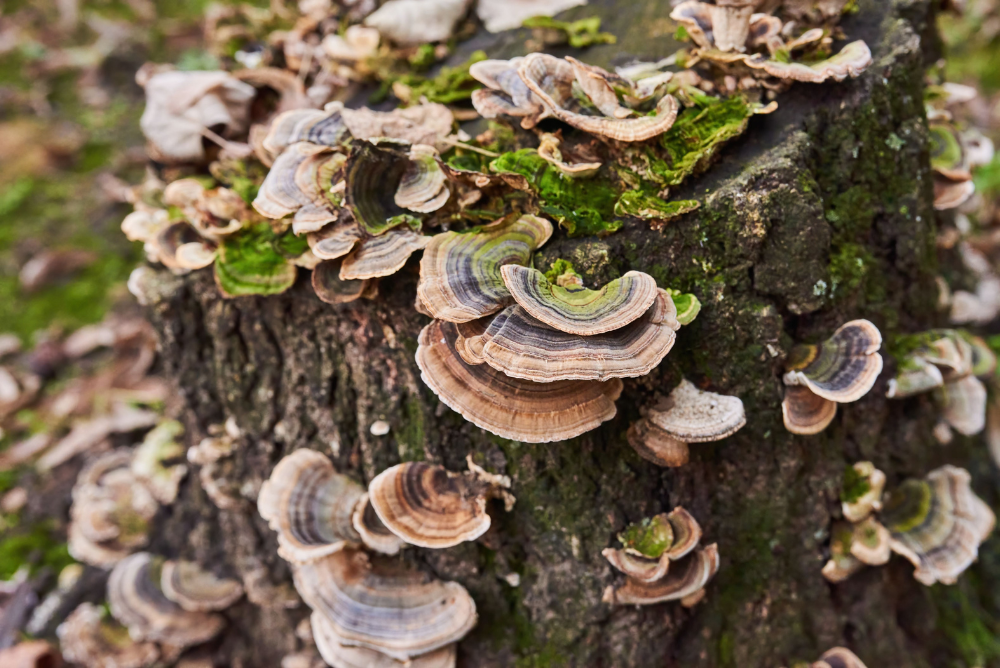– Greg Hunt
I wanted to touch on some of the conditions I’ve been seeing out in the field recently. This year, I’ve been seeing more fungi issues than usual. The spring rains have been heavy, creating a favorable environment for the growth of certain types of fungi.
Harmful Fungi
Entomosporium
Entomosporium leaf spots produce small, circular bright red to maroon spots on the surfaces of new leaves. As the spots age, they will continue to grow and turn grey. the spots enlarge and turn grey as they age. Susceptible species include the apple, crabapple, evergreen pear, hawthorn, loquat, photinia, pyracantha, quince, Rhaphiolepis, serviceberry, and toyon. Photinia & Indian hawthorn are very vulnerable to this type of fungi; mass defoliation as a result of entomosporium leaf spots can eventually kill the them. Wet and cool springs provide a beneficial environment for growth of this fungi, but after the arrival of hot and dry summer weather, it cannot spread as easily.
Anthracnose

One of the most common fungal diseases, anthracnose strikes a wide variety of deciduous trees. A few of the deciduous trees common to our North Texas area are: pecan, Shumard oak, live oak, Bur oak, Chinese pistache, cedar elm, bald cypress, shantung maple, crepe myrtles and magnolia trees. Brown spots will appear on the leaves of these trees, particularly in the leaf veins, accompanied by twig cankers and dieback. Anthracnose causes severe defoliation that can significantly weaken a tree. If you believe a tree is infected by anthracnose, you’ll want to remove fallen leaves from your landscape.
Beneficial Fungi: Mycorrhizae
Not all fungi are hazardous to plants, however. Mycorrhizae are symbiotic relationships that form between fungi and plants. The fungi inhabit the root system of a plant and provide more water and nutrient absorption ability. The plant provides the fungus with carbohydrates as a result of photosynthesis. Mycorrhizae also offer the plant some protection from particular pathogens.
Plants forming mycorrhizal associations become established quickly. Their growth is also faster and they are more productive. Roots with mycorrhizal fungi are able to use water and nutrients that roots without mycorrhizal fungi cannot reach by themselves. The tiny fungal threads are able to reach water trapped in small soil pores. This enhances the plant’s growth as well as increasing the plant’s ability to survive a drought.
The soil in the majority of our service area is alkaline, full of clay, and slow to drain. This problem is exacerbated by commercial fertilizers which contain herbicides and pesticides. One of the reasons our soils stay so compacted is a lack of organic material in the soil. Organic matter is the food for microbes, and soil doesn’t thrive unless it is alive. In most untreated soils, mycorrhizal parasites spores are rich and rapidly fix onto new plants as they develop.

In soils that have been upset by residential construction and development, disturbance of the soil by hoeing, rototilling, and other turnover, and uses of herbicides, pesticides and other chemicals, the mycorrhizae substance can be extensively lessened. They might be inadequate to support plant development. Commercial fertilized soils (except if mycorrhizae have been included) are additionally generally without useful fungi.
In the near future, we’ll talk more about some of these fungi and how Parker Tree can help you manage the health of your trees and plants in the challenging hot summer months.

